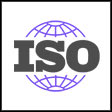ISO 9001 certification is a valuable tool for organizations seeking to demonstrate their commitment to quality management and continuous improvement. It provides a framework for establishing and maintaining effective quality management systems that can drive business success and customer satisfaction.

What is ISO 9001?
ISO 9001 is an international standard that sets out the criteria for a quality management system (QMS). It is based on several quality management principles, including a strong customer focus, the involvement of top management, a process approach, and continual improvement.
Certification Process
To achieve ISO 9001 certification, an organization must implement a QMS that complies with the requirements of the ISO 9001 standard. This involves documenting processes, defining quality objectives, establishing procedures to monitor and measure performance, and ensuring compliance with relevant regulations and customer requirements. Once the QMS is in place, the organization can undergo an audit by an accredited certification body.
Certification Audit
The certification audit consists of two stages: a documentation review (also known as a Stage 1 audit) and an on-site audit of the organization's operations and processes (Stage 2 audit). During these audits, the certification body assesses the organization's QMS to determine if it meets the requirements of ISO 9001.
Non-conformities & Corrective Actions
If any non-conformities are identified during the audit, the organization must take corrective actions to address them. Non-conformities are instances where the organization's processes or procedures do not meet the requirements of the ISO 9001 standard. Once corrective actions are taken, the organization may undergo a follow-up audit to verify that the issues have been resolved.
Certification Decision
If the organization's QMS meets the requirements of ISO 9001, the certification body will issue an ISO 9001 certificate, which is typically valid for a specific period (e.g., three years). The organization can then use the ISO 9001 certification mark to demonstrate its compliance with the standard.
Benefits of ISO 9001 Certification
ISO 9001 certification offers numerous benefits, including improved customer satisfaction, enhanced product and service quality, greater efficiency and consistency in operations, better risk management, increased competitiveness, and access to new markets where ISO 9001 certification is required or preferred.
Why Choose PRNS for your ISO 9001 Certification?
From its inception, PRNS has focused on doing things different to our competitors. All ISO Auditors in the industry are qualified in the same manner to the same level but we select and train our auditors carefully.
- Our auditors will all have in-depth business knowledge so they can focus on your business needs not just what the standard asks for.
- They are not nit picky
- Training is delivered annually on new techniques and skills
We carefully select each auditor to suit your business, we don’t just send the nearest to save some money
ISO 9001:2015 Requirements
ISO 9001:2015 Requirements As per the ISO 9001 Standards, the ISO 9001:2015 requirements given in the clause # 4 to Clause # 10, for the Implementation in the organization and Certification. The summarized ISO 9001 requirements are as followings:
- Identification of Internal and External Issues affective QMS and its monitoring & review.
- Identification of Needs and expectations of Interested Party (i.e Customer, Regulatory Body, etc) and its monitoring & review.
- Identification of applicability of QMS (i.e Exclusion of Clauses of ISO 9001 – if any).
- Establishing the QMS and Its Processes.
- Establishing the Leadership and Its commitments towards QMS.
- Demonstration of Commitments towards Customer Focus.
- Establishing the Quality Policy and Objectives.
- Establishing the Role, Responsibility and Authorities of all the personal in the organization.
- Risk Analysis of -Internal & External Issues along with Need and Expectations of Interested Party
- Ensuring the necessary resources availability- such as – People, Infrastructure, work environments, Monitoring & measurements equipment (if any)
- Maintain the organizational Knowledge for reference
- Provide the Training to the person working in the organization as per Training needs requirement and evaluate the competency
- Development of necessary Documents and Records required by QMS – such as – Quality Policy, Objective, SOP, WI, etc and maintain them by proper Controls of Documents & record with identification, traceability & retrieval
- Identification of Customer Requirements and timely review of customer Requirements
- Customer Communication
- Planning of Resources
- Design and development of Products and services (If applicable)
- Control of externally provided processes, products and services
- Control of production and service provision
- Identification and traceability
- Property belonging to customers or external providers
- Preservation
- Post-delivery activities
- Release of products and services
- Control of nonconforming outputs
- Monitoring the Customer satisfaction
- Monitoring the conformity of products and services, effectiveness of actions taken to address risks and opportunities, performance of external providers, etc
- Internal audit
- Management review
- Nonconformity and corrective action
Contact
We will be happy to give you more information about our quality solutions. Please fill in this form to contact us, we will respond as soon as possible.


